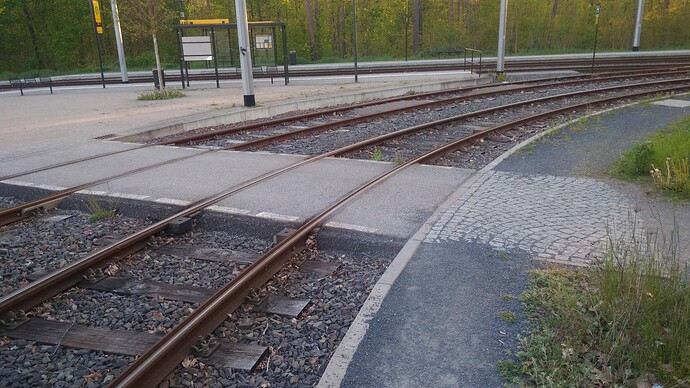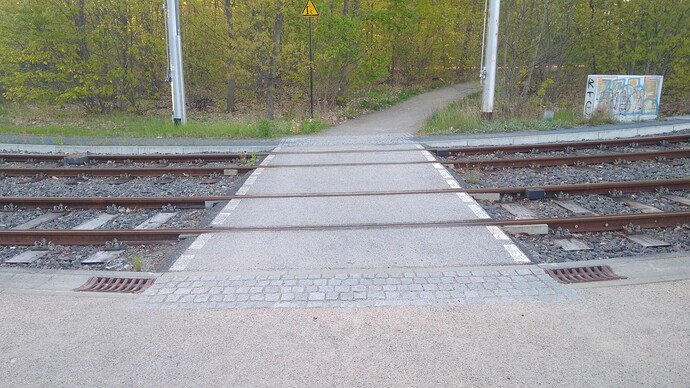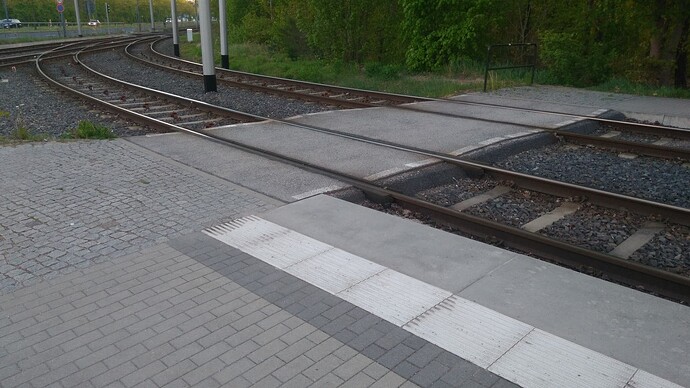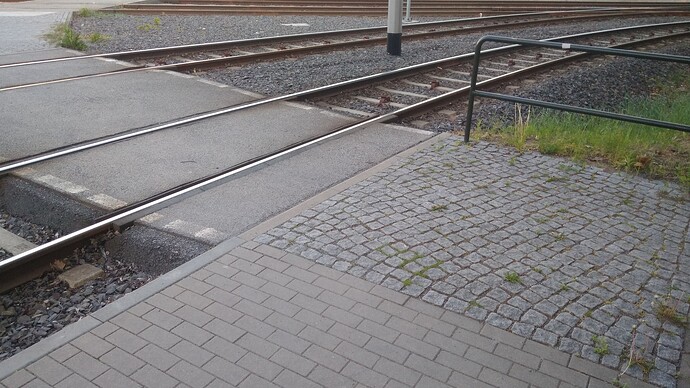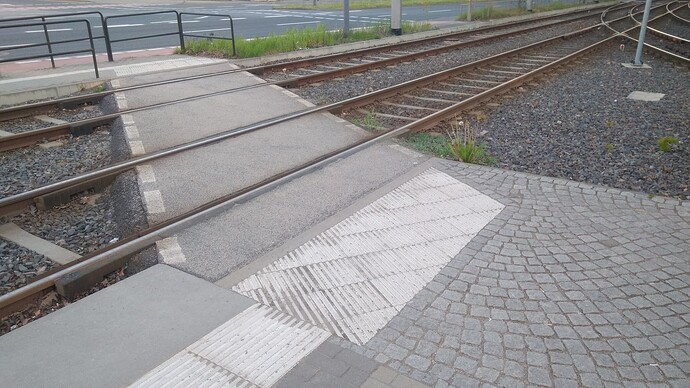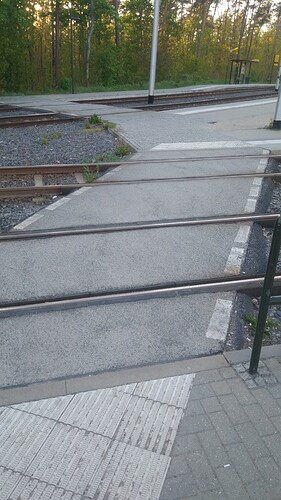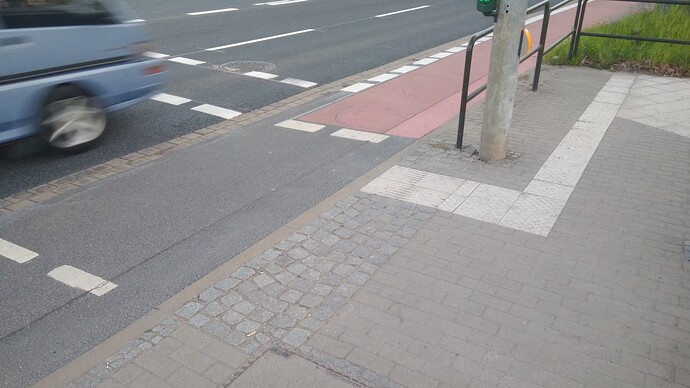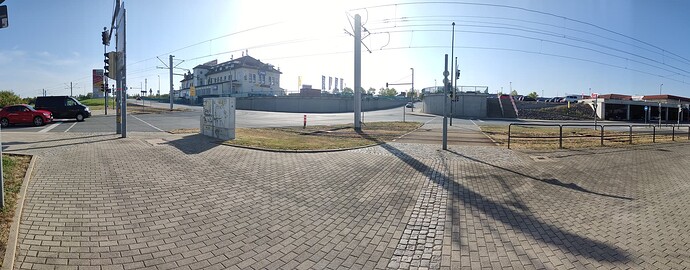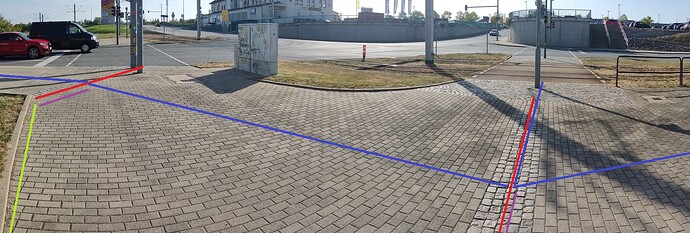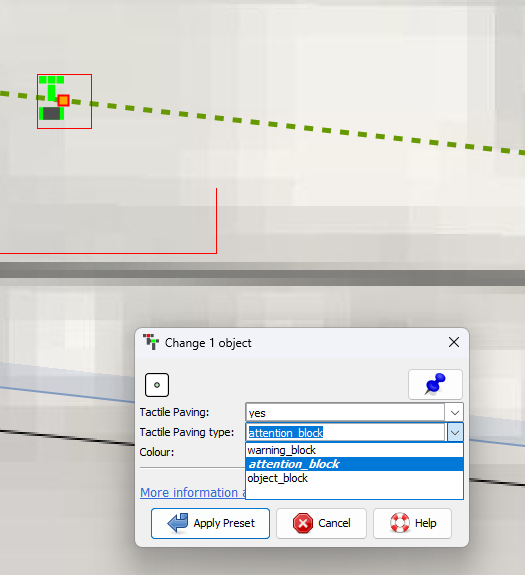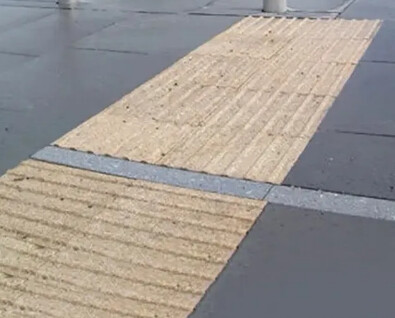There are muncipalities, that want to use more natural product to express things.
First, when we map a sidewalk, we place the footway=sidewalk at the middle of the area, that is fine, it should be placed there.
But how does a visual impared walk, in the middle of a area, they do not get a clue, when it is all the same surface. They walk by the sides.
And this is what you see, it is a hint to the side.
So that they can walk, the green line and the red (purple) back.
But is it tactile_paving?
The model of elements, that visual impared can use is not worked out till a detail that usable. Also the placement of the tags.
Where?, middle of the area tagging and tactile is on the same line, but tactile goes further (purple), so I did set tactile_paving=yes on a way with no other tags, drawn in till the side of the area. This is what you see and should be tagged. If you express all in detail.
I asked myself, should I map green line (image) as a kind of tactile_paving? I did not do that, because, first the area must be tagged well landuse=grass even maybe a kerb line. These lines are visual impared navigation lines.
Is it?
tactile_paving=primitive primitive=* what kind of primitive? Is it usefull data…
Lately, I made a one click setup (JOSM preset) for my own, experimental.
Still learning, what I should use for node and way.
So, I am intrested in what others think.
